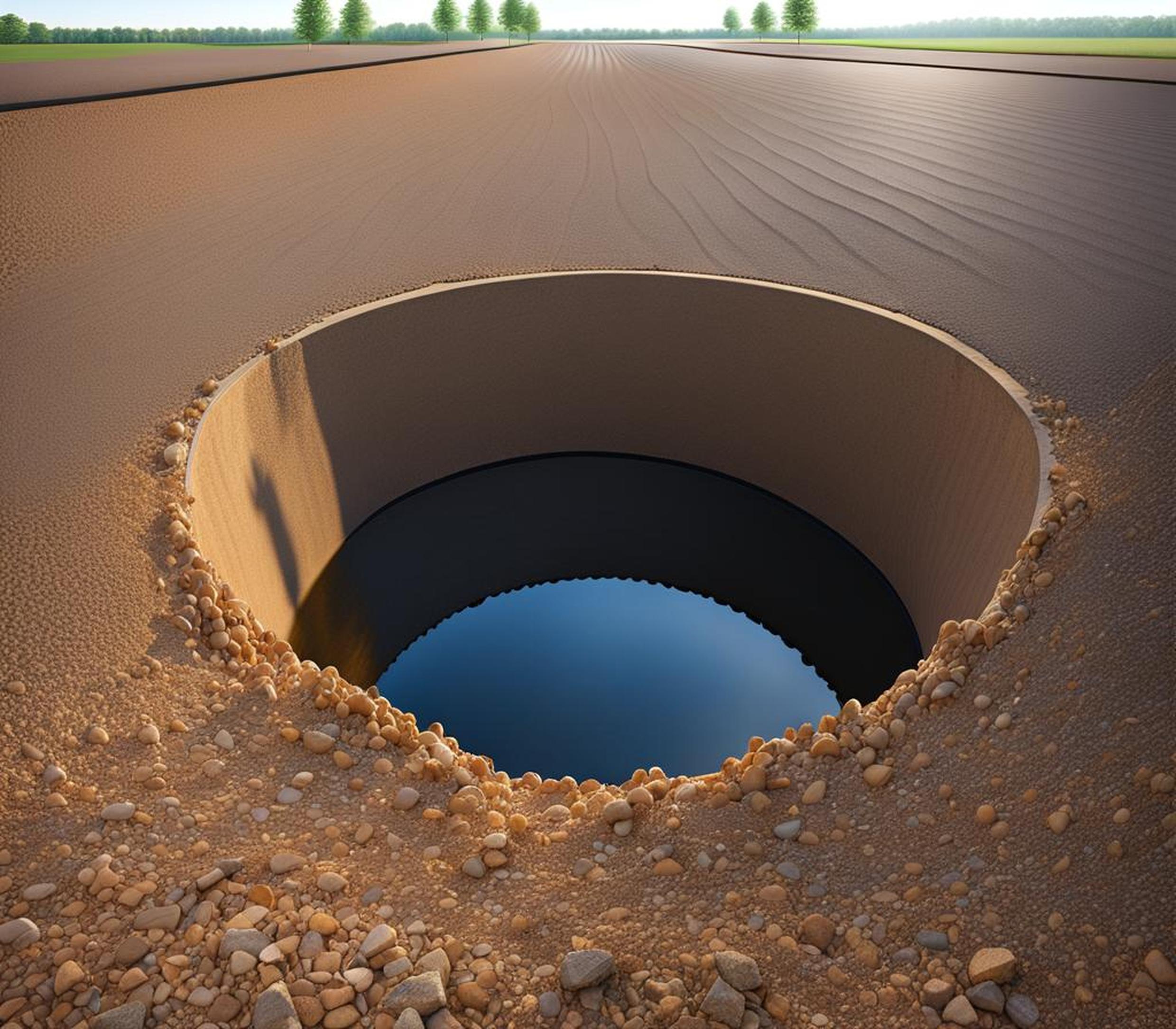French drains are a common landscaping solution for managing water drainage issues. The typical French drain consists of a trench lined with gravel that contains a perforated pipe to quickly divert water away from the property. However, some French drains omit the pipe component entirely.
What is a French Drain?
First, let’s review what defines a standard French drain. French drains are narrow trenches, often installed around a property’s foundation or across soggy areas of the lawn. The trench gets filled with gravel, broken stone, or other coarse aggregate. Perforated plastic pipes embedded in the stone trench transport collected groundwater and surface runoff away to a discharge area. This type of drainage system is useful for preventing flooded basements or alleviating standing water in a yard.
Typical French Drain Components
Conventional French drains have several integral components:
- Excavated trench with sloped sides and bottom
- Durable landscape fabric to line trench walls and prevent soil intrusion
- Washed gravel backfill material, usually 1 1/2 to 2 inches in size
- Perforated plastic corrugated pipe running through the bottom trench to collect water
- Outlet or connection to redirect water away from site
We’ll come back to important differences in gravel-only systems shortly.
When are French Drains Usually Installed?
Understanding where traditional French drains work best provides context for pipe-less variations focused only on drainage through gravel.

Relieving Wet Areas
Placing French drains along sloped landscapes or pooling areas encourages water to seep into permeable fill rather than flooding across turf. Roof runoff can also drain into subsurface pipes.
Protecting Foundations
Wrapping drainage systems around building foundations captures groundwater to reduce pressure on basement walls that can lead to cracks or flooding.
Redirecting Downspouts
Connecting roof drainage from downspouts, storm drains, or paved areas into a French drain system instead of splashing directly onto the property prevents erosion and encourages infiltration.
Why Do Some French Drains Omit the Pipe?
If typical French drains handle stormwater and groundwater so effectively, why exclude the perforated pipe? There are several motivations for this streamlined approach.
Cost Savings
Eliminating the pipe and connectors reduces project expense in materials and labor. Gravel fill is the primary investment.
Simplified Installation
A gravel-only drainage ditch avoids the hassle of properly sloping, embedding, aligning, and connecting segments of perforated pipe.
Flexibility in Layout
The shape and placement of a pipeless trench can meander to capture diffuse surface flow instead of transporting water directly away through straight underground pipes.
An Alternative Solution
In some cases, a French drain without pipes provides sufficient drainage where more elaborate systems aren’t feasible or over-engineered.
Understanding How a Pipe-Less French Drain Works
The efficacy of a French drain without pipe relies on some key factors for dispersing water properly. Let’s walk through considerations of material properties and design decisions.
Gravel and Soil Permeability
Like all French drain types, gravel-filled trenches dissipate water through the surrounding soil. Sandy, loamy soils with high permeability readily accept water dispersed from the gravel drain. Bedrock or dense clay soils are less accommodating of absorption from subsurface gravel beds.
Site Slope and Elevation
Adequate slope determines the flow direction and capacity for draining water into lower elevation soils. Flat terrain makes discharge more challenging than gently sloped land. Steep slopes tolerate rapid outflows but require erosion control where drains overflow during heavy rain.
Trench Positioning to Capture Flows
The linear path of the drain bed across the property should align strategically with likely water runoff flow direction. Meandering the shape allows broader surface coverage and diffused flows rather than straight line point-to-point drainage that pipes facilitate.
Limitations to Evaluate
Gravel-only French drains won’t solve all subsurface water issues. Always assess your unique site parameters.
Dense Soil Compatibility
Impermeable clay soils resist water intake, limiting effectiveness without additional structural drainage components.
Water Volume Capacity
Large rain events may overwhelm drainage capacity through gravel alone, demanding pipes, catch basins, permeable pavement, or rain gardens to share excess water volume.
Site Elevation Needs
Insufficient slope and lack of a lower outlet point to channel away excess accumulation via gravity presents drainage challenges pipes specifically overcome.
Best Practices for Installing a Pipe-Less French Drain
If site conditions indicate an unsophisticated gravel drainage bed meets your stormwater management needs, utilize these best practices.
Choose Appropriate Site
Consider soil permeability, slope, subgrade compaction, and water volume issues before omitting drain pipes.
Trench Prep and Sizing
Excavate a trench at least 18-24″ deep for ample water infiltration volume. Line walls and bed with non-woven landscape fabric to prevent soil filling gaps.
Gravel Backfill Selection
Fill the trench with uniformly-sized, clean washed gravel or crushed stone without fine particles that could clog voids.
Strategic Positioning
Plot trench placement strategically across probable water flow paths, maximizing drainage interception by the gravel bed.
Alternatives to Subsurface Gravel Beds
Landscaping and Earthworks
Surface grading across the property redirects sheet flows while contoured rain gardens allow ponding infiltration. Both discourage puddling.
Supplemental Underground Drainage
A gravel trench supplemented with a perforated pipe inlet to collect surface water combines controls. An outlet pipe at the end or a downstream dry well offering secondary absorption may assist.
FAQs about Pipe-Less French Drains
What does a pipe-less gravel drain cost?
Materials plus excavation typically ranges $15-30 per linear foot, saving at least 25% over conventional French drains.
What maintenance is required?
Inspect for sinkholes annually. Replenish gravel material if trench walls show. Rehabilitate malfunctioning drains or install piping.
Check for surface moisture after storms. Observe gravel condition and subsurface soil saturation just below the trench periodically.
French drains sans pipes offer simplified functionality where site suitability and drainage volumes allow. With attention to design and installation factors, gravel beds can direct diffuse flows through preferential seepage into permeable soils.
Careful consideration of your landscape’s unique water movement patterns, soil types, space constraints, and cost determine whether elite pipeless gravel water dispersion merits your drainage dilemma. Matching the optimal solution to the degree of flooding or moisture issues protects your property long term.
